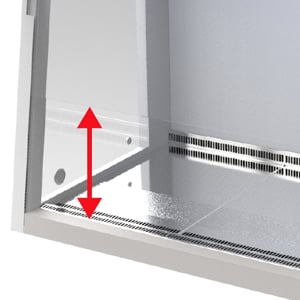
Good technique when working within a Class 2 Biological Safety Cabinet will minimise air turbulence and prevent splatter or unwanted spread of aerosols.
TIP 1: WORK AT THE PROPER SASH LEVEL
Appropriate airflows are reached by measuring air speed on an annual basis to achieve a stamp of approval that the cabinet is fully operational to provide personnel, product and environmental protection.
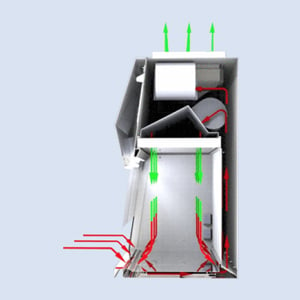
TIP 2: KNOW YOUR AIRFLOW
HEPA Filtered Air Contaminated Filtered Air Biological Safety Cabinets provide personnel, product and environmental protection through the use of HEPA filtered air. Knowing how the air passes through the cabinet is essential.
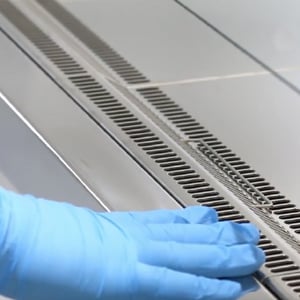
TIP 3: MINIMISE MOVEMENT
Rapid movement within the cabinet will disrupt the air curtain and may compromise the partial barrier containment. Moving arms in and out slowly, perpendicular to the face of the cabinet will reduce this risk.
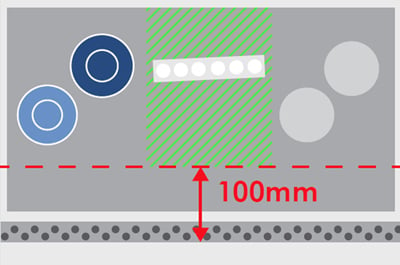
TIP 4: KNOW YOUR WORK AREA
The middle third of the work surfce is the ideal area to be used. All operations should be performed at 100mm from the front grill. Materials or equipment placed in the cabinet may cause disruption tp the airflow resulting in turbulence, cross-contamination and /or breach of containment.
TIP 5: NEVER COVER THE AIR GRILL
Covering the air grill at the front of the cabinet compromises airflow intergity. Blocking the grill can cause laboratory air to enter the working area or even contaminated from the cabinet air to enter the laboratary environment.
TIP 6: WORK FROM CLEAN TO CONTAMINATED
Active work should flow from clean to contaminated areas across the work surface. Materials and supplies should be placed in such a way as the limit the movement of ‘dirty’ items over ‘clean’ items.
Maintain a proper balace of meterials from left to right in order to prevent an airflow imbalance within the workzone. Bulky items such a biohazard bags, discarded pipette trays and suction collection flasks should be placed to one side of the work surface. All materials should also be placed as far back in the cabinet as is practical.
Similarly, aerosol generating equipment should be placed towarf the rear to take advantage of the air split.
TIP 7: WORKING WITH TUBES
Open tubes or bottles should NOT be held in a vertical position. Bottle or tube caps should not be placed on the toweling. Items should be recapped or covered as soon as possible.
TIP 8: WORKING WITH ASPIRATOR BOTTLES OR SUCTION FLASKS
Aspirator bottles or suction flasks should be connected to an overflow collection flask containing appropriate disinfectant and to an in-line HEPA or equivalent filter.
This combination will provide protection to the central building vscuum system or vcuum pump, as well as to the personnel who service the equipment. Inactivation of aspirated materials can be accomplished by placing sufficient chemical decontamination solution into the flask to kill the micro-organisms as they are collected. Once inactivation occurs, liquid materials can be disposed of appropriately as non-infectious waste.
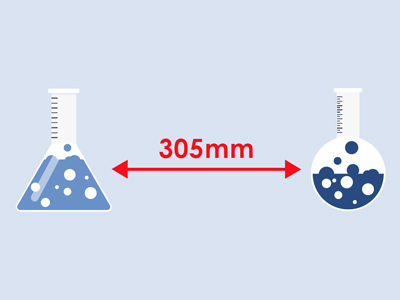
TIP 9: REDUCE SPLATTER
Many common procedures conducted within a Biological Safety Cabinet may create splatter or aerosols. Good microbiological techniques to reduce splatter and aerosol generation will minimise the potential for personnel exposure to infectious materials manipulated within the cabinets.
Class II cabinets are designed so that horizontally nebulised spores will be captured by the downward flowing air within 350mm of travel. As a general rule, keeping clean materials at least 310mm awat from aerosol generating activites will minimise the potential for cross-contamination.
TIP 10: WORKING WITH PETRI DISHES
When working with Petri Dishes and Tissue Culture Plates the lid should be held above the open sterile surface to minimise direct impact of downward air.
Follow this link to view more information on our full range of Safety Fume Cabinets: https://www.thermoline.com.au/category/clean-air-solutions?hsLang=en






